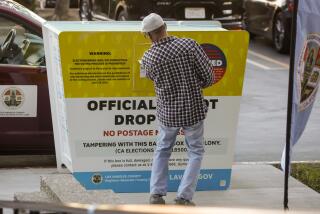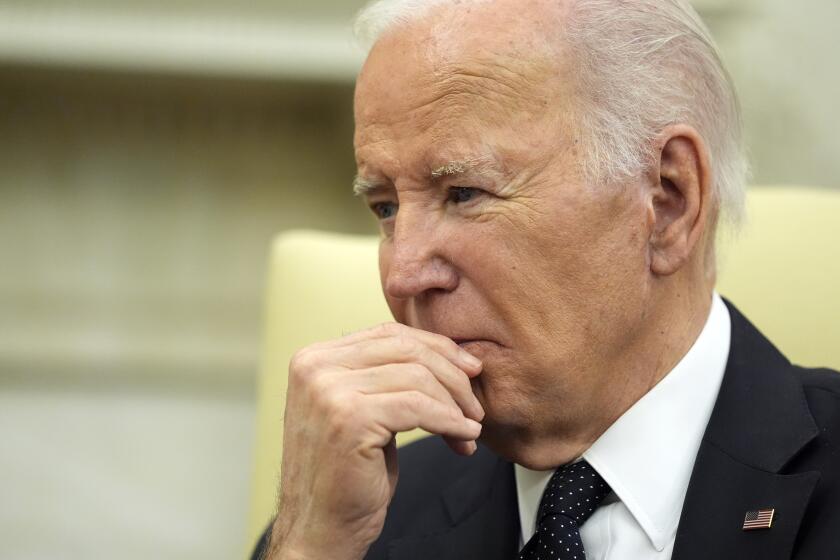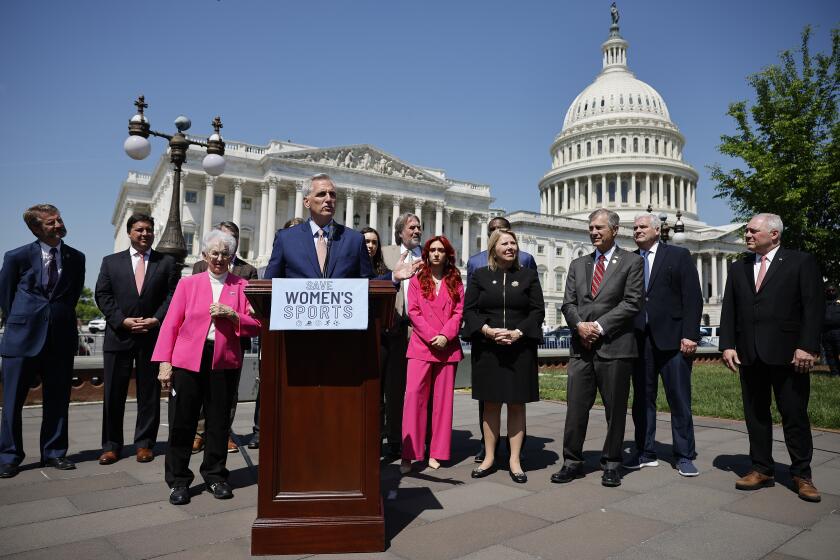Op-Ed: Let 16-year-olds vote for L.A. school board
Politicians pay attention to those who elected them — and it’s a stubborn fact that young Americans vote at much lower rates than their elders. Data just released by the Census Bureau show that even in the historically high-turnout 2018 midterm election, the turnout rate for voters under 30 was half that of persons over 60.
When young people’s participation lags badly, issues important to them — school safety, student loans and climate change, among others — receive short shrift in the public discourse. A vicious cycle of disengagement ensues: Politicians don’t bother to speak about the issues that matter to young people, so young people don’t vote.
Empowering civic participation among young people is vital to the health of American democracy. And one method of doing that is now being considered by the Los Angeles Unified School District board: lowering the voting age to 16 for school board elections.
Turning 18 is not a magical threshold for civic participation.
Los Angeles would follow places around the country that have already extended voting rights to persons under 18. Twenty-one states (though not California) permit 17-year-olds to vote in primaries if they will turn 18 by the general election. Berkeley recently followed the lead of the Maryland cities of Takoma Park, Greenbelt and Hyattsville to allow 16-year-olds to vote in school board elections.
Turning 18 is not a magical threshold for civic participation.
Philadelphia and Montgomery County, Md., effectively lowered the voting age to 14 by allowing high schoolers to elect a full voting member to their local school board. Many other localities go almost that far by having students elect an advisory school board member.
The long history of America’s democracy is one of extending voting rights to interested communities with previously limited representation, the most recent example being lowering the national voting age from 21 to 18 in response to the Vietnam War draft. Students have a stake in the quality of their education and they are the closest observers of what is happening in classrooms. The average student knows more about their community’s schools than the average retiree, yet it is mostly the latter who are making decisions for the former.
Further, lowering the voting age can address the chronic problem of low youth voter turnout by providing a teaching moment.
California recently adopted a policy known as preregistration, which extends voter registration to 16-year-olds so they are already on the rolls as soon as they turn 18. As of last year, the California secretary of state’s office reported more than 200,000 young people had preregistered to vote. Los Angeles can do even better by directly tying the act of registering to vote to casting an actual ballot.
Florida, one of the first states to adopt preregistration, requires election officials to conduct civic education activities in schools. Many Florida election officials work with high school teachers to hold voter registration contests among schools and mock elections to educate students about the mechanics and importance of voting.
Enter the Fray: First takes on the news of the minute from L.A. Times Opinion »
Florida’s preregistration program has a modest effect on youth participation because the act of registering is not immediately tied to the act of voting. Imagine, then, if Los Angeles election officials held real elections on high school campuses, with voter registration opportunities and polling places. Civics teachers could explain the obligations of citizenship while students are voting. Candidates might come to speak to them. It’s well established that voting is habit-forming: Vote once, and you are much more likely to vote again. The broken cycle of virtuous civic participation could thus be mended.
Disadvantaged communities would benefit the most from this approach. Right now, many teens’ first voting opportunity doesn’t come until after they’ve graduated from high school. College students are geographically concentrated and are thus easy to reach for campaigns’ voter mobilization efforts. The tough nut to crack is the abysmal voter turnout for non-college youth. Lowering the voting age to 16 would help them learn the ins and outs of voting before they leave high school.
For those who think young people are too incompetent to make election decisions, a voting age of 16 should be of little concern: Young people will be too incompetent to navigate the voting process too, right? But the truth is that detractors of lowering the voting age are very much afraid of the opposite: that young people will be empowered to vote and engage more broadly in public discourse. For a democracy, more people voting is a good thing.
Michael McDonald is associate professor of political science at the University of Florida, where he studies voter turnout and American elections.
Follow the Opinion section on Twitter @latimesopinionand Facebook
More to Read
A cure for the common opinion
Get thought-provoking perspectives with our weekly newsletter.
You may occasionally receive promotional content from the Los Angeles Times.






